Article also available in other languages
It all started in the 50s, when Elmer Keith, a fan of high powered pistol calibers, created the .44 Magnum cartridge, extending the 1907's .44 S&W Special cartridge case by 6 mm. This is how Keith created one of the most powerful and accurate handgun cartridges to this day.
The .44 Magnum, commercially produced by Remington in collaboration with Smith & Wesson, was chambered in the Springfield manufactured revolvers that used the large “N” frame because of its ability to sustain the high pressure and energy levels yielded by this powerful cartridge.
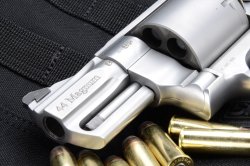
In the beginning, this revolver was simply named “The .44 Magnum” and it was known as “the model 29”. It was only in 1957 that it became famous as Inspector Callahan's revolver in the famous “Dirty Harry” movie series.
The 629 model tested in this review is a direct development of the Model 29 and its mechanical features are similar to it for the most part. Out of all available versions of this handgun, the most accurate are the Performance Center series, a top of the line product manufactured by Smith & Wesson since 1990, featuring quality, finish and fine workmanship that is only obtainable with hand made and finished products.
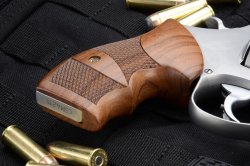
The 629 Smith & Wesson revolver is built using stainless steel with a satin finish.
The model we evaluated has brown wood grips which give a good contrast with the stainless steel’s matte light grey.
Even though most revolvers have sharp corners, this particular model has almost none. Every detail of it is carefully made and the shooter does not have to use protective gloves to use the handgun.
The only sharp parts are the ones on the perfectly made checkering on the hammer, on the cylinder opening button and on the grip panels whose texture is perfected by the finger indents, making the gun very comfortable to handle.
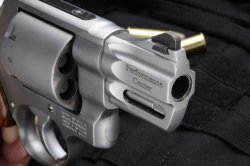
A large and flat trigger improves double action shooting. The trigger also features a pin, machined on its rear side, that contacts the frame in order to eliminate trigger over travel. This model comes with a 2 ½” barrel but the overall impression looking at the gun certainly isn’t the same experienced by looking at a little 36 Chief Special model.
The N frame and the unfluted cylinder, although the configuration is a snub nose, all contribute to make this gun rather large.
The 629 Smith & Wesson model has a double and single action trigger system. The cylinder features 6 chambers.
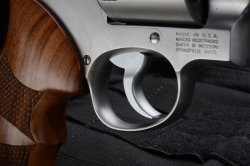
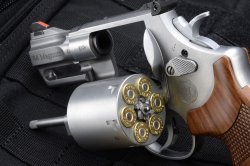
This revolver's mechanic system uses a flat hammer spring. The cylinder rotation is counter-clockwise. After the hammer is cocked, either manually in single action, or pulled back by the trigger in double action, the cylinder pawl pushes on the teeth of the stellar extractor and it makes it rotate, presenting a fresh round to the firing pin and aligning the loaded chamber to the barrel. The single action tested was extremely light and crisp thanks to the quality of the Performance Center’s gunsmiths workmanship, quality even more obvious when shooting in double action. The smooth, uniform, and surprisingly silky trigger travel was paramount in achieving the excellent results in our live fire test. The firing pin, unlike the ones used in older models, is no longer mounted on the hammer but is on the frame. The lock on the spring loaded piston of the rotation rod has been moved to the yoke of the cylinder, and now locks in a small recess in the back side of the barrel shroud.
The Smith & Wesson models, including the 629 model, all have an automatic safety called “hammer block” which consists of a strut which keeps the striker from getting to the cartridge primer until the trigger is fully pulled. There is an additional manual safety which locks the gun's mechanism that is activated with a key that comes with this gun . The lock is on the left side of the revolver's frame, close to the cylinder opening button.
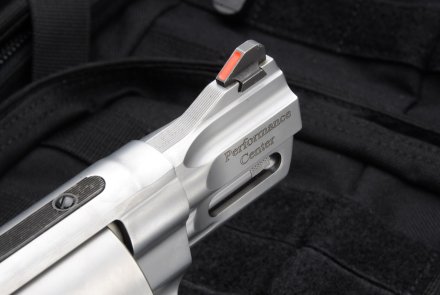
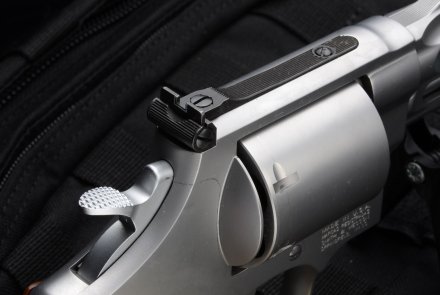
The sights of this revolver are perfectly adjustable for any shooter's needs. The front sight, mounted on a dovetail, is adjustable for windage while the rear sight is a classical Smith & Wesson design that is micro-metrically adjustable for windage and elevation. The front sight also has an orange insert which aids in tracking the target under certain light conditions.
The revolver is esthetically impeccable and will definitely attract many enthusiasts, shooters or collectors even though its actual use may be a little impractical. It could be used as a hunting gun in very few countries; or, due to its configuration and the 2 ½” barrel, it could be considered as a personal defense firearm.
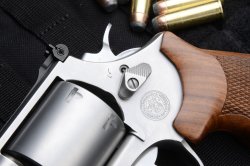
Both uses are very unlikely, since the massive N or “large” frame adds to the overall length of almost 20 cm and its weight of 1122 g. It can definitely be used for home defense, because it can be loaded with the “milder”.44 Special round, in addition to the powerful.44 Magnum. Both cartridges are very popular in the U.S due to their precision and power. The .44 Special is still considered the most accurate cartridge on the commercial market.
The .44 Magnum ammunition has a medium velocity of 480 m/s. The classical bullet, which weights 240 grains or 15.6 g, packs a little more than 180 kgm of kinetic energy when the speed is around the above mentioned 480 m/s. This may be a little excessive for personal defense.
This energy level could cause unplanned damage in normal homes. A shooter needs to be skilled in order to control this gun's recoil. Shooting with no ear- protection, in a closed environment, would permanently damage the shooter’s eardrums and shooting in the dark may blind the shooter for a few seconds due to the flash effect of the fireball.
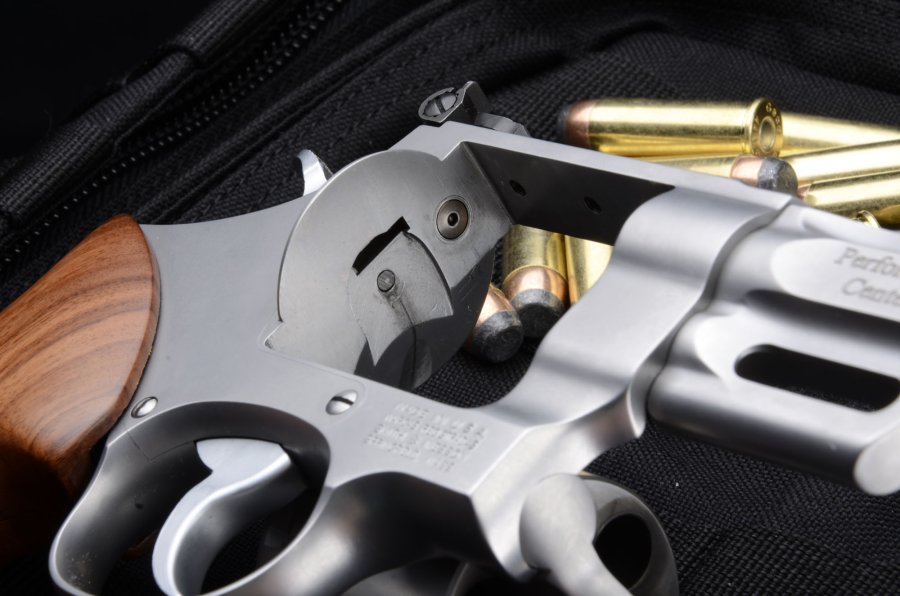
The milder .44 Special is a more manageable but also features powerful kinetic energy. Its extreme reloads can make it very similar to the magnum caliber. They can push the 240 grains bullet at 280 m/s developing an energy of more than 60 Kgm. Unlike semi-automatic pistols, the lack of a recoil spring in revolvers allows the shooter to use the reloaded cartridge in many different ways.
It is possible to lower the kinetic features as much as you like and use the load that is more appropriate for home and personal defense or even use weaker loads for fatigue free shooting range sessions.
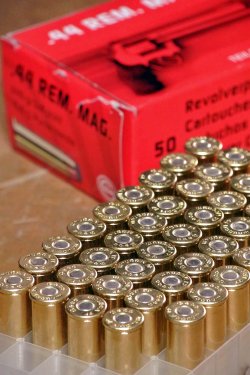
We tested this revolver with Geco’s .44 Magnum load. We have dealt before with this type of gun’s harsh and tiring recoil.
We know what effect a full powered .44 Magnum load can have on the shooter's hand so when we live fire tested this gun at a range of 15 meters from the target, using both hands and no protective gloves, we approached the gun with care and respect. We got excellent results in single action but what are remarkable are the double action groups, achieved thanks to the incredible smoothness and “roll over” features of the trigger, masterfully tuned by the Performance Center technicians.
Of course, report, recoil and muzzle flip were amazing, so to speak, not to mention the muzzle flash of the bullet that went on for another meter in front of the barrel.
It should be clear that the 629 model, even more so with a 2 ½” barrel is not a beginners’ gun, especially if using full powered loads.
We advise those who'd like to use it at the shooting range a through training, starting with mild .44 Special loads working all the way to full powered .44 Magnum loads over an appropriate number of range sessions, possibly with a competent rangemaster, before attempting to use it, in example, for home defense.
In order to assess the recoil problem, it may be advisable to replace the hard wood grips with larger, and more comfortable, rubber grips.
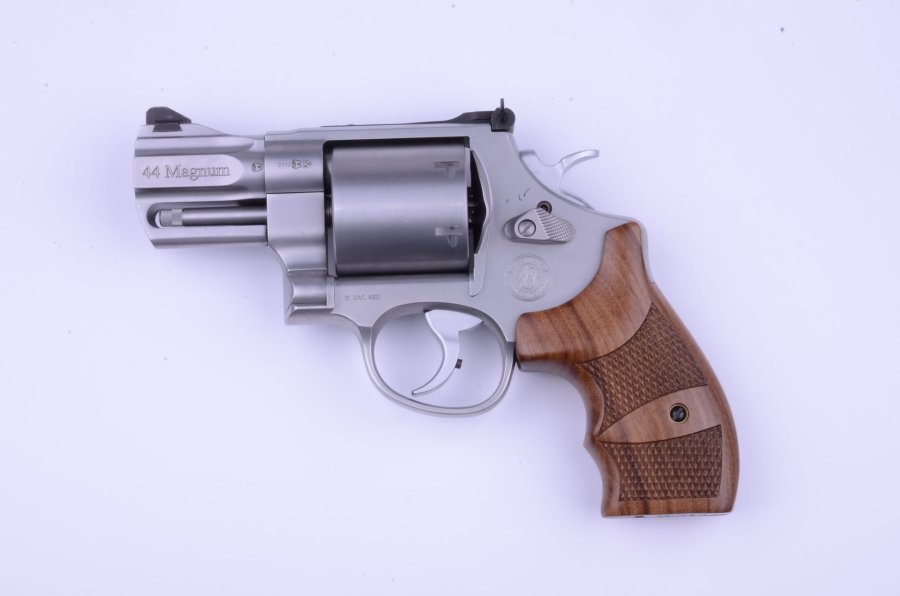
Sometimes we buy things just so we can admire their esthetic or mechanical peculiarity, or revel in what their potential peak performance can be. The 629 Smith & Wesson Performance Center model .44 Magnum revolver with 2 ½” barrel is one of those guns which may have some caliber and size problems but it definitely has those features that make it precious item to possess by a collector or a fan who want to experience using an interesting and extraordinary gun.
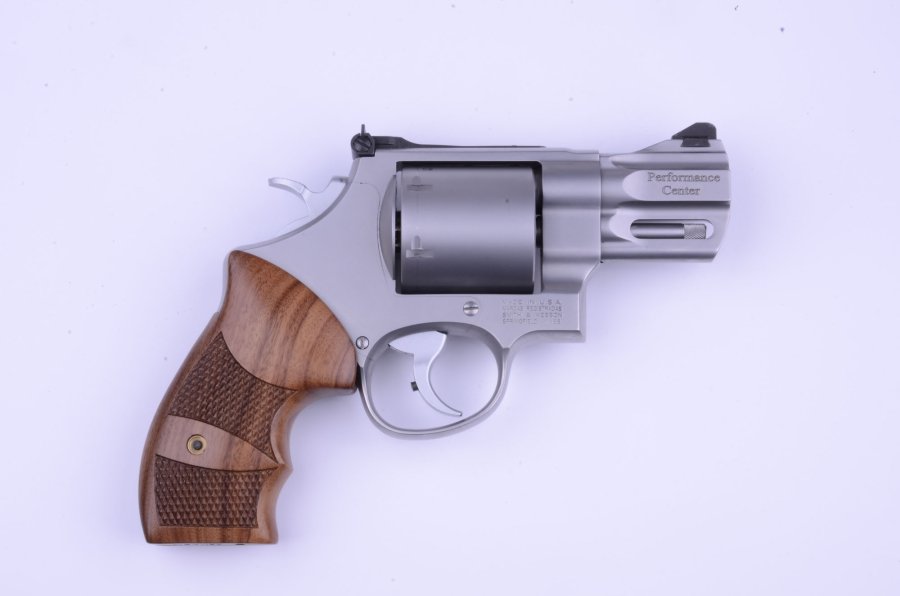
Article also available in other languages










